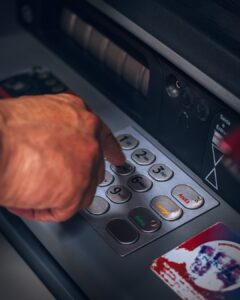Understanding Leverage Meaning in Forex Trading: A Beginner’s Guide
Forex trading is a financial market that offers immense opportunities for investors to make substantial profits. However, like any other investment, it comes with its own set of risks and complexities. One of the fundamental concepts that every forex trader needs to understand is leverage.
Leverage is a powerful tool that allows traders to amplify their trading positions. In simple terms, it enables traders to control larger positions in the market using a smaller amount of capital. For instance, if a trader has a leverage ratio of 1:100, it means that for every $1 in their trading account, they can control $100 in the market.
The concept of leverage can be quite confusing for beginners, and it is important to fully comprehend its implications before diving into forex trading. Let’s explore the various aspects of leverage to gain a better understanding.
Benefits of Leverage in Forex Trading
Leverage offers several advantages to forex traders, making it an attractive option for those looking to maximize their profits. Here are some of the key benefits:
1. Increased Trading Power: With leverage, traders can access larger trading positions than their initial investment would allow. This can potentially result in higher profits if the market moves in their favor. However, it is crucial to remember that leverage can also amplify losses, so it should be used with caution.
2. Low Capital Requirement: Forex trading typically requires a significant amount of capital to make substantial profits. Leverage enables traders to participate in the market with a smaller initial investment, making it more accessible for individuals with limited funds.
3. Diversification Opportunities: Leverage allows traders to diversify their portfolio and trade multiple currency pairs simultaneously. By spreading their risk across different positions, traders can potentially minimize their exposure to individual currency fluctuations.
Understanding Leverage Ratios
Leverage is expressed in the form of ratios, such as 1:50, 1:100, or 1:500. The first number in the ratio represents the amount of capital the trader has, while the second number indicates the amount of capital they can control in the market. For example, a leverage ratio of 1:100 means that for every $1 in the trader’s account, they can control $100 in the market.
It is important to note that higher leverage ratios can be both beneficial and risky. While they offer the potential for higher profits, they also magnify the potential losses. Therefore, it is crucial to carefully consider the leverage ratio that suits your risk appetite and trading strategy.
Risk Management in Leverage Trading
Leverage amplifies both profits and losses, making risk management a critical aspect of forex trading. Here are some risk management strategies to consider when trading with leverage:
1. Stop Loss Orders: A stop loss order is a predetermined price level at which a trade will be closed to limit potential losses. By setting a stop loss order, traders can protect their capital and limit the downside risk associated with leverage trading.
2. Risk-Reward Ratio: It is essential to assess the potential reward against the potential risk before entering a trade. By maintaining a favorable risk-reward ratio, traders can ensure that their winning trades outweigh their losing trades, even when using leverage.
3. Adequate Capital: While leverage allows traders to control larger positions, it is important to have sufficient capital in the trading account to absorb potential losses. Overleveraging and trading with insufficient capital can quickly lead to margin calls or even account wipeouts.
Conclusion
Leverage is a powerful tool that can significantly enhance the trading capabilities of forex traders. It allows them to control larger positions with a smaller amount of capital, potentially increasing their profits. However, leverage also amplifies risks, requiring traders to implement effective risk management strategies.
As a beginner, it is crucial to thoroughly understand the concept of leverage and its implications before engaging in forex trading. By educating yourself and practicing with smaller leverage ratios, you can gradually build your skills and experience in the forex market while minimizing potential losses.






